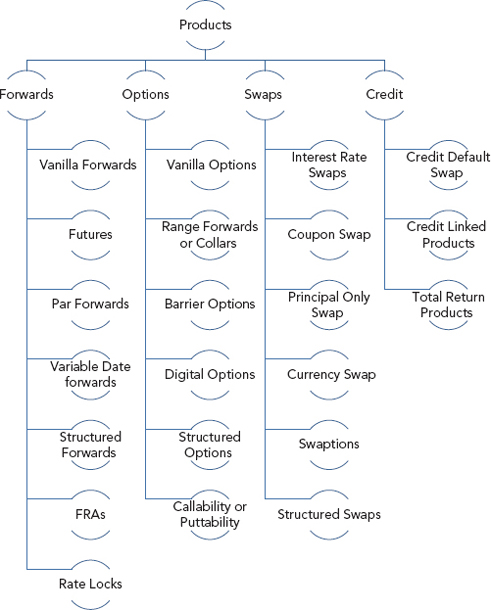Chapter Twenty
Products for Managing Risk
WHEN WE BUY A CAR or a new appliance, we need to understand how to use it. We buy it based on what it can do and how it looks. We should know what the parts and processes are—the transmission, engineering, engine, motor, and technology that goes behind its design, assembly, and finally manufacturing—but it is not essential for us to know in detail how each part works. And so it is with financial products. We may not need to know the details of the engineering behind them, but we do need to know what the various instruments are and how we can use them.
Here we explain some of the broad mechanics behind these products. We also provide practical ways to understand the construction and pricing of some of these products.
The products are divided into four families: forwards, options, swaps, and credit. This is depicted in Figure 20.1.
FIGURE 20.1 Family of Products

Technically, credit products are a part of the broader fixed income class and use a combination of forwards, options, and swaps in some form. Since their evolution and treatment are different, they deserve, in my view, a separate family for the sake of classification.
FORWARDS FAMILY
The forwards family is essentially a set of price-fixing contracts across asset classes, where two parties agree to buy and sell a particular asset or commodity at a particular price on a particular ...
Get The Handbook of Global Corporate Treasury now with the O’Reilly learning platform.
O’Reilly members experience books, live events, courses curated by job role, and more from O’Reilly and nearly 200 top publishers.

